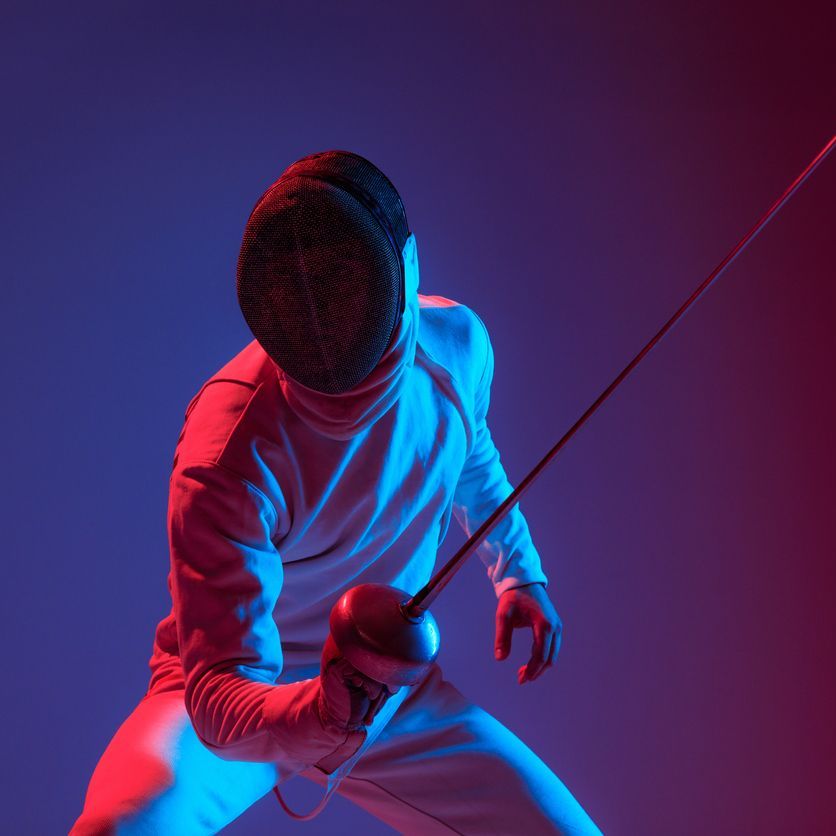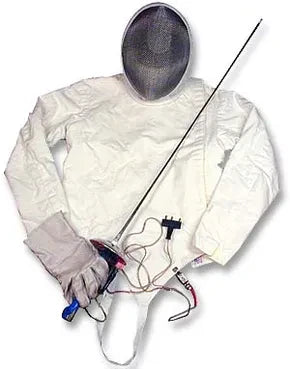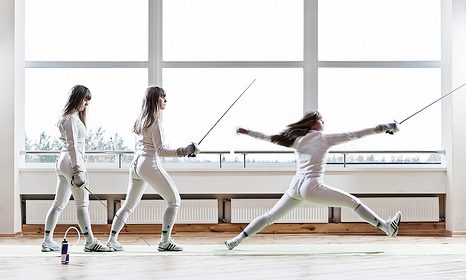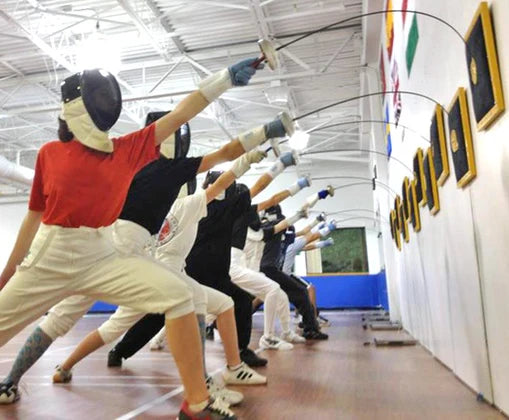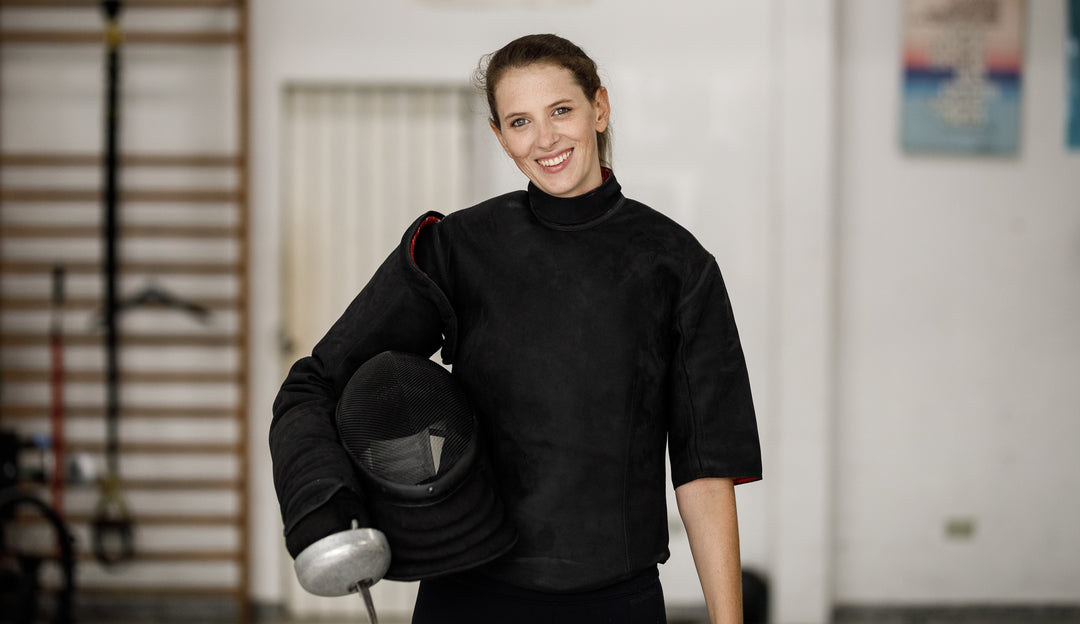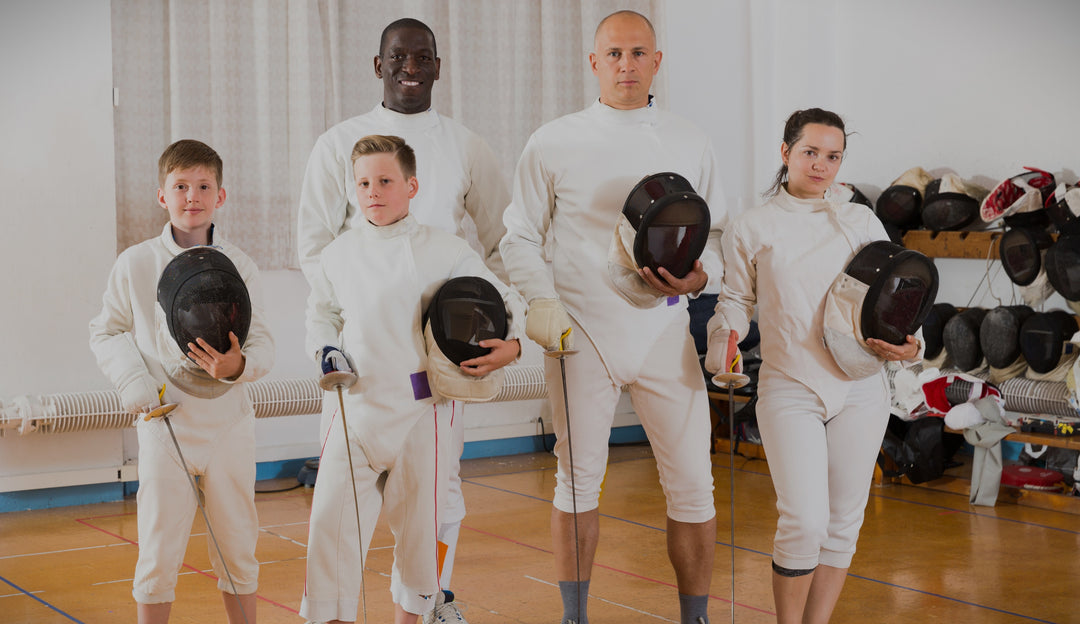Beginner fencing lessons are the perfect way to dive into the sport. Most clubs offer introductory courses that run for about four to six weeks, giving you a solid taste of what fencing is all about. These classes are designed to get you comfortable with the fundamentals, safety rules, and one of the three weapons—foil, epee, or sabre.
What to Expect in Your First Fencing Class
Stepping onto the fencing strip for the first time is exciting, but it can also feel a bit mysterious. Forget the dramatic duels you’ve seen in movies. A real beginner fencing class is a structured, safe, and supportive environment designed to introduce you to the core principles of this "physical chess."
A lot of newcomers worry they need to be incredibly fit or have lightning-fast reflexes just to start. That’s a common myth. Fencing is a sport that builds those qualities over time. Your first few lessons won't be about intense competition; they'll be about building a solid foundation from the ground up.
Core Components of a Beginner Lesson
You’ll quickly find that most intro courses follow a similar pattern, breaking down the sport into manageable pieces. This approach ensures you learn correctly and safely from day one. Your first classes will likely include a mix of these activities:
- A Warm-Up: Expect some light cardio and dynamic stretching. This is crucial for preparing your muscles for fencing-specific movements and preventing injuries.
- Introduction to Safety: Your coach will walk you through the most important rules, like always keeping your mask on during drills and understanding proper etiquette on the strip.
- Learning the Stance: You'll be guided into the "en garde" stance. This is the foundational ready position that gives you the balance needed for every offensive and defensive move.
- Basic Footwork Drills: You'll practice simple movements like the advance (moving forward) and the retreat (moving backward). It's all about learning how to control distance.
To give you a clearer picture, we've broken down what a typical first class looks like.
What to Expect in Your First Fencing Class
Here's a quick look at the core activities you'll encounter in a typical beginner fencing lesson.
| Lesson Component | What You Will Do | Why It Is Important |
|---|---|---|
| Warm-Up & Stretching | Light cardio (jogging, jumping jacks) and dynamic stretches focusing on legs and arms. | Prepares your body for fencing-specific movements and helps prevent strains or injuries. |
| Safety Briefing | Listen as the coach explains the essential safety rules, including mask-on protocols and how to handle the weapon safely. | Ensures a safe environment for everyone and builds good habits from the very beginning. |
| "En Garde" Stance | Practice getting into and holding the basic fencing stance. | This is the fundamental ready position that provides balance and mobility for all actions. |
| Basic Footwork | Learn and drill the advance (forward step) and retreat (backward step) without a weapon. | Footwork is 90% of fencing. Mastering these basics allows you to control the distance to your opponent. |
| Weapon Introduction | Hold a practice weapon (usually a foil) and learn the correct grip and basic arm position. | Gets you comfortable with the tool of the sport and prepares you for simple blade actions. |
| Cool-Down | Gentle static stretching to help your muscles recover. | Reduces muscle soreness and improves flexibility over time. |
By the end of the session, you'll have a real feel for the basic mechanics of the sport, all in a low-pressure setting.
The process of learning fencing for beginners typically involves structured introductory courses lasting between four to six weeks at fencing clubs. These programs focus on basic skills, rules, and getting a feel for the sport. Discover more about how clubs introduce the sport from USA Fencing's official guidance.
Choosing Your First Weapon and Gear
Before you can land your first lunge, you need the right equipment. Fencing gear isn't just for show; every piece is designed for your safety, letting you train with confidence. While most clubs will have rental gear for anyone taking fencing lessons for beginners, understanding your kit is a critical first step.
The gear is what allows you to focus on learning the sport without worrying about getting hurt. From the moment you put on your mask, you're stepping into a tradition of safety and respect. For a deeper dive, check out our guide on what gear do beginners need to start fencing.
Understanding Your Protective Kit
Your safety on the strip is paramount, and a few key pieces work together to protect you. This gear is non-negotiable, even during basic drills.
- The Mask: This is your most important piece of protection, hands down. A modern fencing mask is made of a tough steel mesh built to withstand serious impact, protecting your entire head and neck.
- The Jacket: Made from puncture-resistant materials like nylon or Dyneema, the jacket covers your torso and arms. It’s specifically designed to stop an opponent's blade from causing an injury.
- The Plastron (Underarm Protector): You'll wear this under the jacket. It provides an essential extra layer of safety for your weapon arm and the side of your torso—a common target area.
- The Glove: You only wear one, on your weapon hand. It protects you from getting hit on the fingers and helps you keep a solid grip.
This basic setup gives you the foundation for safe practice so you can learn the fundamentals without risk.
Deciding Between Foil, Épée, and Sabre
Fencing is split into three disciplines, and each one has its own weapon, rules, and unique feel. Your club will probably start you on a specific weapon (often foil), but it's good to know how they differ right from the start.
| Weapon | Target Area | Scoring Rules | Feel and Style |
|---|---|---|---|
| Foil | Torso only (front and back) | Right-of-way (priority rules apply) | Precise and tactical; often called "physical chess." |
| Épée | Entire body, head to toe | No right-of-way; first touch wins. | Patient and strategic; all about timing and distance. |
| Sabre | Entire body from the waist up | Right-of-way (priority rules apply) | Fast, aggressive, and athletic; feels like cavalry sword fighting. |
Foil is a popular starting point because its right-of-way rules build a fantastic foundation for both offense and defense. But the weapon that really clicks with you might come down to your personality. Are you a careful strategist (épée), a lightning-fast attacker (sabre), or a tactical purist (foil)?
"Choosing a weapon is like choosing a character in a game. Each has its own strengths and requires a different strategy to win. Don't be afraid to try all three as you progress to see which one truly suits your natural style."
Renting Versus Buying Your First Gear
For your first few lessons, renting is almost always the way to go. It’s an affordable way to get started without a big financial commitment right out of the gate.
Renting lets you make sure fencing is the right sport for you before you invest in a full kit. A typical beginner rental package from a club will include the basic protective gear and a practice weapon, which is perfectly safe and adequate for learning the ropes.
Once you’ve decided to stick with it—maybe after a few months—then you can start thinking about buying your own gear. The biggest advantage of owning your kit is the perfect fit, which seriously improves comfort and mobility. Your coach will be the best person to ask for recommendations on starter sets that balance quality and value.
Learning the En Garde Stance and Footwork
In fencing, your feet are just as critical as your blade. Before you even dream of landing a picture-perfect attack, everything starts from the ground up with a solid foundation.
This foundation is the en garde stance—the ready position that gives you balance, stability, and the ability to move explosively. It’s the starting point for every single action you'll take on the strip.
Think of it as your "home base." The en garde stance keeps your center of gravity low and your body coiled like a spring, ready to either launch an attack or get out of the way of one. Without a proper stance, your movements will be slow, clumsy, and predictable, making you an easy target. It's the very first thing you'll master in your fencing lessons for beginners.
Mastering the En Garde Stance
Getting into the en garde stance feels awkward at first. Don't worry, that's completely normal. With practice, it’ll become second nature. The whole point is to achieve perfect balance and mobility along the narrow fencing strip.
Here’s how to build your stance from your feet up:
- Feet Placement: Start with your feet about shoulder-width apart, forming a perfect "L" shape. Your front foot should point directly at your opponent, while your back foot is turned out at a 90-degree angle to it.
- Knee Bend: Bend your knees like you’re about to sit in a chair. You want your weight distributed evenly between both feet—not leaning too far forward or back. This bend is the engine for all your movement.
- Body Alignment: Keep your torso upright but turned sideways to present the smallest possible target. Your back arm should be raised and bent, which helps you maintain balance.
This next visual shows how the stance flows directly into the core movements you'll learn.

As you can see, every action originates from a stable en garde position, transitions into controlled footwork, and finishes with a decisive attack.
The Language of Fencing Footwork
Once you're comfortable just holding the stance, it's time to move. Fencing footwork is all about precision and control. Its main job is to manage the distance between you and your opponent—a concept fencers call "the game of distance."
You will drill three key movements over and over again:
- The Advance: This is your basic forward step. You lead with your front foot, and your back foot follows, covering a short distance while keeping you in your balanced stance.
- The Retreat: The exact opposite of the advance. Move your back foot first, and then the front foot follows. This is your primary way to create space and defend.
- The Lunge: This is your main attacking move. It's an explosive extension where you kick your front foot forward while pushing off your back leg. At the same time, you extend your weapon arm straight out to reach the target.
A classic beginner mistake is standing up straight or letting your feet get too close together while moving. This completely kills your balance and telegraphs what you're about to do. Always focus on staying low and keeping that "L" shape with your feet.
For instance, if you see your opponent take a small advance toward you, your immediate reaction should be a controlled retreat of the exact same size. This keeps the distance consistent. This constant back-and-forth adjustment is the real heart of fencing strategy. Mastering the advance and retreat lets you control the fight's tempo, while a powerful lunge is what lets you finish the point.
Your early fencing lessons will be packed with these drills to build the muscle memory you need to move without even thinking about it.
Understanding Basic Attacks and Defenses
Once your footwork starts feeling less like a clumsy dance and more like second nature, it's time to bring the blade into the picture. This is where the real "conversation" of fencing begins—a lightning-fast exchange of questions and answers, all spoken with steel. The language is built on a few core ideas: the attack, the parry, and the riposte.
Getting these actions right is the heart of any fencing lessons for beginners. Don't worry about speed just yet. The goal is precision and control. A clean, well-timed move will always beat a fast, sloppy one.
The Simple Attack: Your First Offensive Move
The most fundamental offensive action is the direct attack. It's nothing fancy: just a clean, straight extension of your arm, immediately followed by a lunge, aimed right at the valid target. Think of it as drawing the shortest, most efficient line from your point to your opponent.
Your coach will drill this into you: extend your arm before you start your lunge. This sequence is absolutely critical. In foil and sabre, it establishes what's known as "right-of-way," signaling to the referee that you initiated the attack. More importantly, it ensures your weapon gets there first.
The Parry: Your Primary Defense
If your opponent's attack is the question, your parry is the answer. A parry is simply a defensive action with your blade to deflect their incoming attack. Forget what you've seen in movies with big, clanging swings. A proper fencing parry is a small, sharp, and precise movement.
You'll learn a system of numbered parries that protect different areas of your body, called "lines." For example, two of the first you'll likely learn are:
- Parry Four (Quarte): A classic move that defends the high inside line of your body.
- Parry Six (Sixte): The counterpart to four, this parry protects your high outside line.
These motions are tiny and efficient. You only need to move your blade just enough to knock the incoming attack safely aside without yanking yourself out of a good defensive position.
A great parry doesn't just keep you from getting hit—it creates an opening. By deflecting your opponent's blade, you throw them off balance for a split second and expose a line for your own counter-attack.
The Riposte: Turning Defense into Offense
That immediate counter-attack you launch right after a successful parry? That's called the riposte. It’s the period at the end of your defensive sentence. You parry, and you immediately riposte. This one-two rhythm is the absolute backbone of fencing tactics.
A well-executed parry-riposte should feel like a single, fluid motion. The instant you make contact to deflect their blade, your own point should already be on its way to their target. It's this seamless transition from defense back to offense that makes a fencer truly formidable.
This focus on structured, technical development isn't just a local club thing; it's supported at the highest levels of the sport. The international governing body, the Fédération Internationale d'Escrime (FIE), has long prioritized coaching education to ensure beginners everywhere get quality instruction. They even created the FIE Coaching Academy in Budapest back in 2016 to serve as a global hub for raising coaching standards. You can learn more about the FIE's global coaching initiatives. This commitment ensures that fundamental skills like the parry and riposte are taught correctly and effectively all over the world.
How to Find the Right Fencing Club for You
Your progress in fencing, not to mention your motivation and how much you enjoy it, will depend hugely on where you learn. Finding the right club is just as important as nailing your footwork. A great club gives you more than just instruction; it offers a supportive community that actually makes you excited to show up for your fencing lessons for beginners.
Unlike more mainstream sports, fencing is still relatively niche, which means finding a local club can sometimes be a challenge. In the United States, for instance, there are roughly 700 fencing clubs serving around 40,000 members. In a big state like California, that can mean there's only one club for every 470,000 people. It really highlights how spread out these communities can be. You can learn more about the accessibility of fencing across the country to get a better sense of the landscape.
What Makes a Great Beginner Fencing Club
When you start looking, try to see past just the location and price. The club’s culture and the quality of the coaching are what will really shape your experience. A club that feels welcoming from the moment you step inside is a massive green flag.
Here are a few key things to look for:
- Qualified Coaches: The head coach should have recognized credentials, but more importantly, they need experience teaching beginners. A fantastic competitor isn't always a great teacher for someone just starting out.
- A Dedicated Beginner Program: A structured introductory course is a good sign the club invests in its new members. It ensures you learn the fundamentals the right way before you're fencing with more experienced people.
- Clear Safety Standards: Watch a class. Are fencers wearing the right gear? Does the coach enforce mask-on rules during drills? Safety should be a visible priority, no exceptions.
- Welcoming Atmosphere: Does the club feel friendly and inclusive? You want a place where members encourage each other, not some super-intense environment that might intimidate a newcomer.
For a more detailed checklist, check out our comprehensive guide on how to find a great fencing club.
Group Classes Versus Private Lessons
Most beginners start with group classes, and for good reason. They’re more affordable and give you a social environment where you can learn alongside other people who are also just starting. That shared experience is fantastic for staying motivated.
Private lessons, on the other hand, offer personalized, one-on-one instruction. They're more expensive, sure, but they are absolutely the fastest way to fix specific technical issues or just speed up your learning curve. Many fencers add private lessons to supplement their group training once they decide they want to get more serious.
Pro Tip: Ask if you can watch or even try a single intro class before you sign up for a full course. It’s the best way to get a real feel for the coaching style and the club's overall vibe to see if it’s the right fit for you.
Smart Questions to Ask Before You Join
When you visit a club, don't be shy about asking questions. This is your chance to get all the info you need to make a decision you feel good about.
Here are a few essential questions to have ready:
- What’s the cost and schedule for the beginner program?
- Is equipment rental included? If so, for how long?
- What is the coach-to-student ratio in the beginner classes?
- What happens after I finish the intro course? What’s the next step?
- Are there opportunities for both recreational and competitive fencing?
The answers will tell you a lot about how the club runs and whether its program lines up with what you’re looking for. Finding the right home base for your fencing journey is the first major victory on your path.
Common Questions About Starting Fencing
Stepping onto the strip for the first time is exciting, but it’s totally normal to have a few questions before you commit. Fencing is a unique sport, and knowing what to expect can make all the difference. We’ve heard these questions from tons of newcomers, so let's clear them up.
Getting these answers sorted out will help you feel a lot more confident and ready to dive in.
Do I Need to Be in Great Shape to Start Fencing?
Absolutely not. This is probably the biggest myth that keeps people from even trying fencing lessons for beginners. Fencing clubs build their introductory classes for people of all fitness levels. The focus is on learning proper technique and form, not on raw athletic power.
You'll quickly find that fencing is an incredible full-body workout. It’s not about being fit before you start; you get in shape by fencing. You’ll be building agility, improving your balance, and boosting your stamina with every lesson.
"Many adults find fencing to be a perfect way to break from a mundane routine and engage in a challenging yet fulfilling pursuit. The sport meets you where you are and helps you grow both physically and mentally."
The warm-ups and drills are designed to build you up gradually. Before you know it, you'll notice your endurance improving class after class.
How Long Until I Am Good at Fencing?
Progress is a personal thing, but most people start feeling comfortable with the basic stance, footwork, and simple attacks within a few months. "Good" means different things to different people, but here's a realistic timeline.
- First 3-6 Months: You'll be building a solid foundation. You’ll move with more confidence and be able to hold your own in controlled bouts against other beginners.
- Around One Year: If you’re practicing consistently (say, 1-2 times a week), you might feel ready to dip your toe into your first local, unrated competition. It's a fantastic milestone for a new fencer.
The truth is, fencing is a journey of lifelong learning. Even Olympians are constantly refining their skills. The strategic side of the sport is incredibly deep, which is something we love exploring.
Is Fencing an Expensive Sport to Start?
It really doesn't have to be, which surprises a lot of people. The initial cost can actually be quite low.
Almost every fencing club has affordable equipment rental packages specifically for beginners. This means you don’t have to go out and buy your own mask, jacket, and weapon right away. Your main cost upfront is just the fee for the introductory course. As you get more serious about the sport, you can start investing in your own gear piece by piece.
What Is the Best Age to Learn Fencing?
Honestly, there isn't one. While it's true that many elite fencers start young, often around 7-9 years old, the sport is incredibly popular with adults who are picking it up for the very first time.
You’ll find that many clubs have thriving beginner programs for adults and veterans (40+). Adults often bring a level of strategic thinking and patience that helps them excel. It's a sport that’s rewarding to start at any stage of life, offering a challenge for both your body and your mind.
Ready to take the next step? At Fencing Club, we provide high-quality, reliable gear for fencers at every level, from your very first lesson to the competitive strip. Explore our beginner-friendly kits and find everything you need to start your fencing journey with confidence at https://fencing.club.


